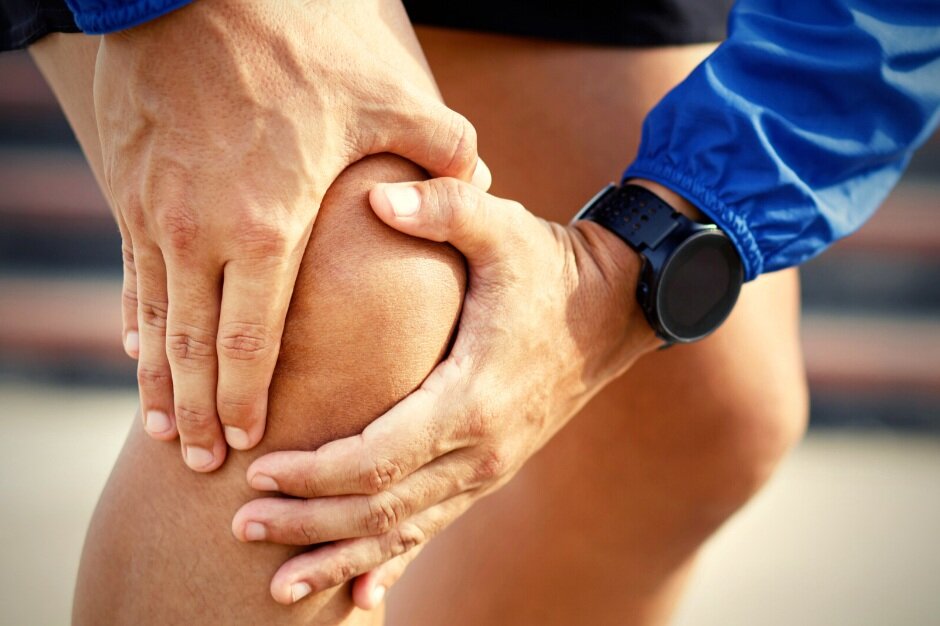10 Most Common Myths About Knee Pain
Knee pain is one of the most common orthopedic conditions that bring patients to physical therapy. The knee is the largest joint in the human body and the most easily injured. The knee is a hinge joint that is made up of a complex structure of bones, cartilage, ligaments, and tendons that provide mobility and stability to the leg.
Knee pain is pain that is felt behind and around the kneecap, often during activities that place stress on the knee, and restricts movement, affects muscle control in the leg, and reduces the strength and endurance of the muscles that support the knee.
While knee pain is incredibly common and one of the leading causes of chronic pain, there are many misconceptions and myths about what causes knee pain and the best treatments to address knee pain.
10 Myths About Knee Pain
Myth: Knee pain is always the direct result of a problem in the knee.
Fact: Knee pain is not necessarily due to a direct problem with the knee. If the knee is not tender or swollen, pain is coming from elsewhere to the knee as the knee does not transmit pain to other parts of the body. Knee pain can originate from the low back, hips, ankle, or thigh that radiate pain to the knee. Knee pain can also result from osteoporosis, bursitis, and tendonitis. Knee pain may also result from an earlier injury, blunt trauma to the knee, repetitive strain, or osteoarthritis, which is a chronic degenerative joint disease.
Myth: Knee pain is an inevitable part of aging.
Fact: Aging does not correlate with knee pain. Getting older can predispose you to certain risk factors that can lead to knee issues but getting older itself is not the cause and knee pain is not inevitable as you age. Risk factors include gaining weight with age that can place additional stress on your knee; menopausal changes in women that can contribute to the development of osteoporosis; and “wear and tear” on the knee that contributes to osteoarthritis.
Myth: Running can increase the risk of developing knee osteoarthritis.
Fact: While knee pain or injury is one of the most common injuries among runners, running does not necessarily increase the risk of developing knee osteoarthritis. Research has shown that recreational runners have lower rates of osteoarthritis than sedentary individuals. Only elite runners and professional athletes have an increased rate of osteoarthritis, per recent research.
Myth: You need to push through knee pain to get rid of it.
Fact: Pushing through knee pain can make things worse. It is essential to address the underlying cause of your knee pain as soon as possible to alleviate the pain and help you regain function and strength safely.
Myth: You should decrease or avoid physical activity if you have knee pain as it places added pressure on the joints and exacerbates your pain.
Fact: Research has shown that exercise therapy is one of the best ways to improve knee function and reduce pain over the long term. Regular exercise is essential for everyone, including those with knee pain. If you do have knee pain, it is recommended to engage in low-impact exercises such as swimming or a stationary bike. Lack of regular exercise can decrease mobility in the knee and lead to more joint issues down the road.
Myth: The best treatment for knee pain is over-the-counter pain medication, e.g. NSAIDs like aspirin.
Fact: Over-the-counter pain medication does not cure knee pain, but merely blocks the sensation of pain without addressing the underlying cause of the pain. Prolonged use of pain medication can have adverse effects on your health, particularly your kidney and liver. Physical therapy is a safe and effective alternative to manage knee pain relief.
Myth: My scan will show exactly what is causing my knee pain.
Fact: Research shows that scan results are poorly related to actual pain and disability. A person’s degree of cartilage damage, meniscal degeneration, or arthritis does not correlate to pain levels. Research reveals that on average 20% of people with pain-free knees have meniscal tears and 19% of those over age 40 have a meniscal tear and function with zero pain. Fifty percent of those over 40 will have asymptomatic, pain-free spinal disc bulges.
Myth: A steroid injection will fix my knee pain.
Fact: A steroid injection only provides short-term relief for knee pain, particularly for those with an acute arthritic flare-up. Repeated injections are not ideal as they can lead to side effects such as weakened tissues.
Myth: All meniscus and ligament tears need surgery.
Fact: Surgery is not the only effective way to treat meniscal and ligament tears. Many types of meniscal tears and ligament strains and tears can be treated with physical therapy to restore function, mobility, and strength to the knee, depending on the goals of the patient. Surgery is recommended for athletes seeking to compete at a high level (ACL reconstruction or meniscus surgery) or if the torn meniscus has created a locked joint.
Myth: Surgery is the best long-term treatment for knee pain.
Fact: Surgery is an invasive treatment requiring extensive rehabilitation following knee surgery. Physical therapy is effective in managing all types of knee pain, reducing pain, and restoring function, mobility, and range of motion through a customized therapeutic exercise program. Should surgery be necessary, post-surgical rehabilitation is critical to regain range of motion and function in the knee.
A physical therapist initially conducts a thorough evaluation of the knee pain and performs a physical exam of the knee and other affected body parts to assess range of motion limitations in the knee, muscle weakness and limited flexibility in the hip, knee, and ankle, and review knee performance when engaging in balance and coordination exercise. The therapist then designs a customized therapeutic exercise program to increase leg strength, improve balance, coordination, and agility, enhance kneecap tracking and improve the flexibility and mobility in the hip, knee, and ankle.
